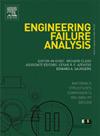Friction-induced stick-slip vibration characteristics and tribological behavior of high-speed train braking interfaces under various external force excitations
IF 5.7
2区 工程技术
Q1 ENGINEERING, MECHANICAL
引用次数: 0
Abstract
During low-speed braking phases of high-speed trains, friction-induced stick–slip vibration (FISSV) is frequently observed, primarily excited by strong interfacial friction, which generates harsh friction noise. The intense vibration also causes abnormal wear and even detachment of friction blocks, leading to service failures that threaten operational safety. Therefore, it is essential to investigate the characteristics of FISSV and the associated tribological behavior at the braking interface under strong friction, and, on this basis, to propose effective methods for FISSV regulation. The braking force, as the external force applied to the brake friction pair, dynamically adjusts according to the operating state of the train. This variation results in different FISSV characteristics and friction wear behaviors at the interface. However, few studies have been reported in this area. This research aims to address this gap by systematically elucidating the FISSV characteristics and friction-wear behavior of high-speed train braking interfaces under different loading conditions through an integrated experimental and numerical approach. Experimental investigations were carried out under four distinct load levels utilizing a custom-designed multifunctional friction wear testing machine. Concurrently, a finite element methodology incorporating dynamic-wear coupling was developed within the ABAQUS to model the evolution of contact pressure distribution and wear patterns. The findings reveal that applied load exerts a substantial influence on interfacial contact pressure distribution and wear mechanisms, with elevated loads resulting in pronounced pressure concentration at the leading edge of the friction block, resulting in severe eccentric wear (EW) and more intense FISSV responses. With increasing load, the vibration intensity, displacement amplitude, and vibration period of the system all increase remarkably, while the adhesion stage lasts longer. This study reveals the mechanism by which load influences FISSV behavior by modulating interfacial friction and stress distribution, providing theoretical guidance for vibration control and structural optimization of high-speed train braking systems.
不同外力激励下高速列车制动界面的摩擦诱发粘滑振动特性及摩擦学行为
在高速列车低速制动阶段,摩擦诱发的粘滑振动(FISSV)经常被观察到,主要是由强烈的界面摩擦激发的,产生了强烈的摩擦噪声。剧烈的振动还会引起摩擦块的异常磨损甚至脱落,从而导致使用故障,威胁运行安全。因此,有必要研究在强摩擦作用下制动界面的摩擦阻力特性及其摩擦学行为,并在此基础上提出有效的摩擦阻力调节方法。制动力作为施加在制动摩擦副上的外力,根据列车的运行状态进行动态调整。这种变化导致了不同的FISSV特性和界面处的摩擦磨损行为。然而,这方面的研究报道很少。本研究旨在通过实验与数值相结合的方法,系统地阐明不同载荷条件下高速列车制动界面的摩擦磨损特性和摩擦磨损行为,从而弥补这一空白。利用定制的多功能摩擦磨损试验机,在四种不同的载荷水平下进行了实验研究。同时,在ABAQUS中开发了一种结合动态磨损耦合的有限元方法来模拟接触压力分布和磨损模式的演变。研究结果表明,外加载荷对摩擦块的界面接触压力分布和磨损机制有很大影响,载荷升高导致摩擦块前缘压力集中,导致严重的偏心磨损(EW)和更强烈的FISSV响应。随着载荷的增大,系统的振动强度、位移幅值和振动周期均显著增大,附着阶段持续时间延长。本研究揭示了载荷通过调节界面摩擦和应力分布来影响FISSV行为的机理,为高速列车制动系统的振动控制和结构优化提供理论指导。
本文章由计算机程序翻译,如有差异,请以英文原文为准。
求助全文
约1分钟内获得全文
求助全文
来源期刊

Engineering Failure Analysis
工程技术-材料科学:表征与测试
CiteScore
7.70
自引率
20.00%
发文量
956
审稿时长
47 days
期刊介绍:
Engineering Failure Analysis publishes research papers describing the analysis of engineering failures and related studies.
Papers relating to the structure, properties and behaviour of engineering materials are encouraged, particularly those which also involve the detailed application of materials parameters to problems in engineering structures, components and design. In addition to the area of materials engineering, the interacting fields of mechanical, manufacturing, aeronautical, civil, chemical, corrosion and design engineering are considered relevant. Activity should be directed at analysing engineering failures and carrying out research to help reduce the incidences of failures and to extend the operating horizons of engineering materials.
Emphasis is placed on the mechanical properties of materials and their behaviour when influenced by structure, process and environment. Metallic, polymeric, ceramic and natural materials are all included and the application of these materials to real engineering situations should be emphasised. The use of a case-study based approach is also encouraged.
Engineering Failure Analysis provides essential reference material and critical feedback into the design process thereby contributing to the prevention of engineering failures in the future. All submissions will be subject to peer review from leading experts in the field.
 求助内容:
求助内容: 应助结果提醒方式:
应助结果提醒方式:


